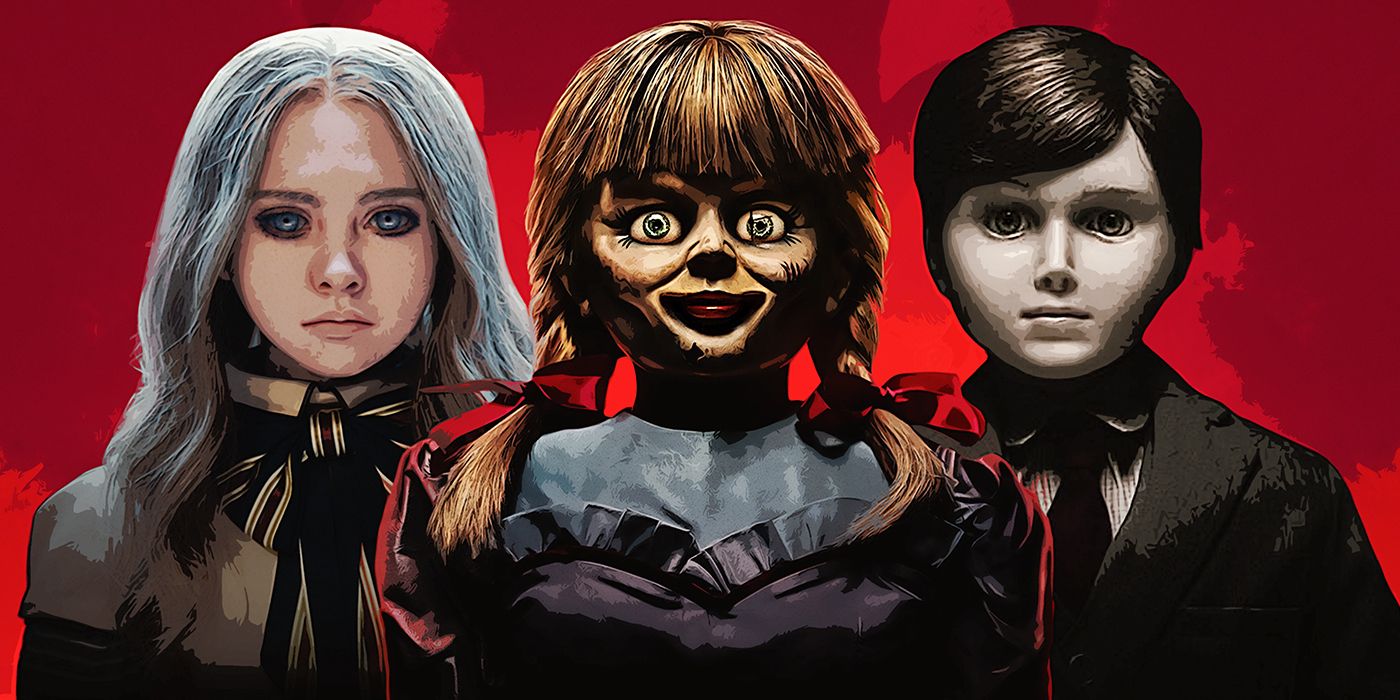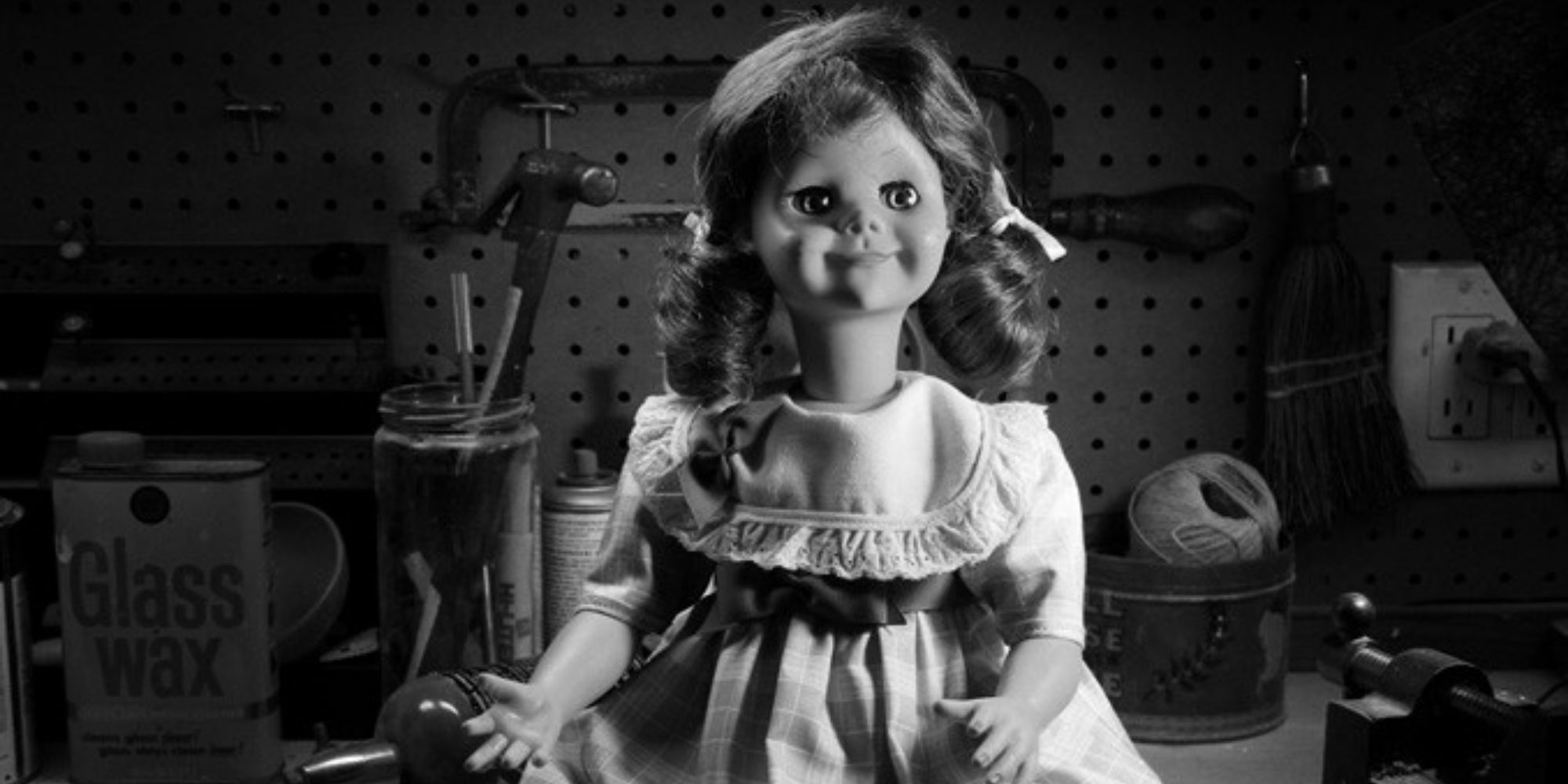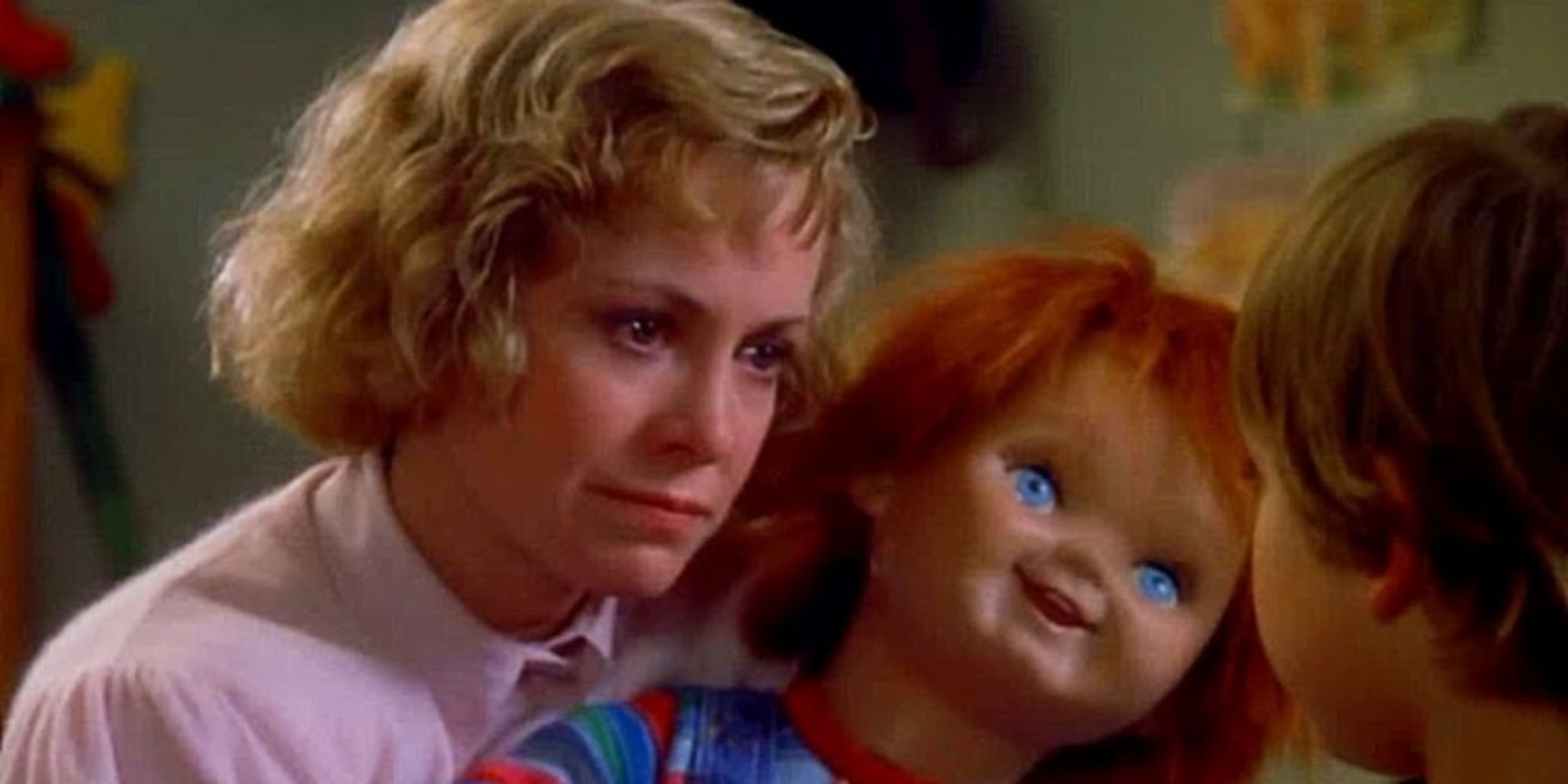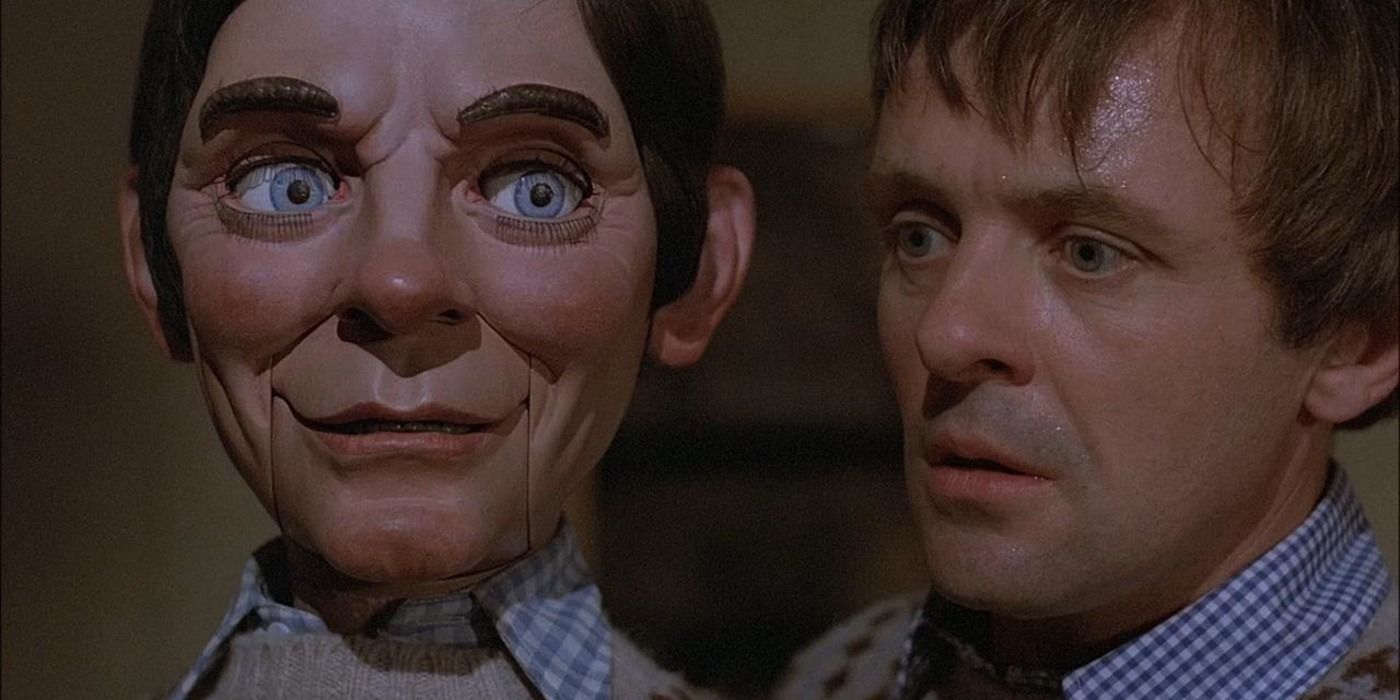We all have things in horror movies that scare us. For some it’s a killer wearing a mask. For others, it’s clowns. Some might say it's creepy kids or creatures or demons that keep them up at night. What we can all probably agree on though, is that few things are scarier in a movie than dolls. They always have been, but why is that?
Some of the most frightening scenes in history revolve around dolls. Chucky became an icon for how creepy he looked in Child’s Play. Annabelle is a household name through The Conjuring and its own spinoff films, but she never even moves. M3GAN is sure to be a hit simply from how disturbing she looks in the trailers. This is not a new phenomenon. 1945’s horror anthology Dead of Night has freaked out film fans for nearly eight decades thanks to “The Ventriloquist’s Dummy” segment in which a dummy named Hugo may or may not be alive. Then there’s Talky Tina from a 1963 episode of The Twilight Zone titled “Living Doll.”
A horror film doesn’t even have to be about the doll for it to leave a mark. Just a cameo or a few short scenes will do. Will you ever forget the clown doll in Poltergeist or Billy the puppet on his tricycle in Saw? One look at them and we recoil in fear.
Our Brains Are Wired to Fear Dolls
A lot of that fear comes from how our brains are wired. We can’t help it. It’s hard to process a doll face because it looks so real, yet it’s not. “Our brains are designed to read faces for important information about intentions, emotions and potential threats,” Linda Rodriguez McRobbie wrote in the Smithsonian Magazine. “However much we know that a doll is (likely) not a threat, seeing a face that looks human but isn’t unsettles our most basic human instincts.”
Frank McAndrew, a Knox College psychologist wrote a paper about it, saying, “We shouldn’t be afraid of a little piece of plastic, but it’s sending out social signals. They look like people but aren’t people, so we don’t know how to respond to it, just like we don’t know how to respond when we don’t know whether there is a danger or not... the world in which we evolved how we process information, there weren’t things like dolls.”
So, according to McAndrew, if dolls had always existed in the realistic way they do now, our evolution would have long ago adapted to them, but now our collective brains can’t figure them out. To see something that looks like a humanoid, but that doesn’t have skin like one, that doesn’t move or breathe like a human, puts us on high alert for a threat, even if we personally know that we have nothing to fear.
Have you ever walked into someone’s house and they have dolls displayed on a shelf or lined up on a bed? These dolls aren’t in a movie. There’s no haunting score, no villain, no threat to be afraid of, yet we’re still afraid anyway. Something so lifelike can’t be trusted, for certainly, our brain tells us, that thing goes against what living beings are supposed to look like in nature. There’s no reason why it couldn’t come to life and kill us.
The Threat Goes Beyond Dolls
That threat of lifelike faces we can’t process goes beyond dolls. Remember how many people were creeped out by The Polar Express? We may have known that a certain scene was just Tom Hanks with a different kind of animation layered over his face, but he looked so real, yet not, with his waxen details, that some couldn’t handle it.
It’s the same reason why we’re put on edge by clowns. Clowns were meant to be a source of joy, but long before Stephen King scared everyone half to death with Pennywise in IT, people thought well-meaning clowns were creepy. The paint on their face distorted the features of the person underneath, awakening that flight part of our brain that tells us this is a threat.
We Can't Process It, So We Become Scared of It
It’s the same for masked killers. If Nick Castle had just walked around in 1978’s Halloween, killing people without a mask on, it wouldn’t have worked. How many slasher films with unmasked killers do work? Not many. But the moment Nick Castle slides that pale William Shatner mask down over his face, he is transformed, because suddenly his new face is something lifelike but distorted. We can’t process it, so we become scared of it. The movie wouldn’t have worked if Michael Myers walked around wearing, say, a giant green alien head. Our brains would automatically tell us that it's not real, that there’s nothing to be scared of. A white human face that doesn’t move, however, is a different story. It’s no different from a lifelike, unmoving doll face.
There is even a phobia for this called automatonophobia, which is the fear of objects that look like humans: robots, wax figurines, statues etc. Would you ever want to be left alone in a wax museum at night? Probably not. The fear of dolls is so great for some that it even gets its own subcategory of automatonophobia called pediophobia. It might be irrational, but for someone suffering with those phobias, it's simply their brains turning up the fear we all collectively carry to the next level.
Perhaps We Could Have Evolved Past This Fear
Perhaps at some point we could have evolved past this fear of inanimate human-like objects, but that certainly won’t be happening now. Once Hollywood figured out this ingrained fear that the human race carries, they exploited it. If most people are scared of dolls already, it made their job easy and gave them a built-in audience for whatever they could think of.
Surprisingly, Hollywood didn’t exploit it as much as you would think they would have until the last few decades. Sure, there was Dead of Night and The Twilight Zone, but through the 1970s there weren’t many other big examples outside of the “Amelia” segment in the otherwise forgettable Trilogy of Terror in 1975, where a tiny Zuni doll comes to life and attacks poor Karen Black. There was also 1978’s Magic with Anthony Hopkins, where his creepy looking ventriloquist dummy, Fats, just might be a real being with its own mind.
Maybe there weren’t more attempts to tap into this fear because the technology wasn’t there yet to make it realistic. After all, Hugo and Fats, the ventriloquist dummies, and Talky Tina didn’t really come to life on the screen. They might blink or move their head, but the fear was left to our imagination. And while the Zulu doll may have really come to life within Trilogy of Terror, it was primitive, with not much emotion to its features. We knew it was a guy just below the camera pushing it around to make it look real.
'Child's Play' Changed Everything
Child’s Play in 1988 changed everything because here everything we feared broke out of our imagination and actually played out before our eyes. With the great robotic work involved, when Chucky came to life, you saw it. He moved. He had facial expressions. He walked. He talked. After that, there was no coming back. The fear of dolls was here to stay forever.
A cop-out for some of our societal ills has been to blame the movies. Here, however, it’s no cop-out. You fear dolls because movies have conditioned you to. We may be born with that fear as well, but humanity had a chance at evolving past the fear. Humanity has evolved past other collective fears over the centuries. This won’t be one of them. You don’t see dolls in happy rom-coms and family friendly movies. It’s in horror where dolls are displayed. So, now, whenever we see a doll, our anxieties immediately go up, because we’ve been programmed to fear them. A doll is not a child’s toy to be hugged and loved. A doll is a humanoid creature that is going to come to life and hide in your closet or under your bed while you sleep. If you have one in your house, it’s probably watching you right now, waiting.




.jpg)
